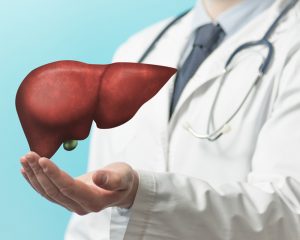Ascites cirrhosis refers to abnormal distention due to fluid accumulation in a pouch-like area called the peritoneal cavity. Many different conditions can cause ascites, and liver cirrhosis is one of them. Other conditions that can cause cirrhosis include cancer in the abdomen, tuberculosis, and heart failure (congestive).
There are many complications of cirrhosis, but ascites is a very usual occurrence. You will hardly find someone who has a liver disease that doesn’t have ascites. It has a few typical symptoms. If you have ascites, you will experience abdominal bloating with accompanying pain. There is also likely to be shortness of breath.
Ascites is one of the indications of the extent to which liver damage has occurred. Severe ascites indicates severe liver damage and may be an indication that liver failure is underway. Ascites is never a stand-alone condition. So when you go to a doctor, the doctor would aim to confirm whether your ascites is as a result of liver cirrhosis or any other cause. But then also, ascites itself can lead to other complications such as kidney failure, lower GI bleeding, among many others. So your doctor would examine your belly to find out the relative quantity of fluid in your peritoneal cavity. Anyways, you can treat ascites cirrhosis by taking care of the underlying liver damage. That often involves lifestyle and dietary changes.
What You Should Know About Ascites Cirrhosis
Ascites is commonly caused by advanced liver cirrhosis. But the general convention is that portal hypertension is the link between liver disease and ascites.
Portal hypertension refers to an elevation in the blood pressure in the artery that supplies the liver. That seems to be the main cause that links cirrhosis with ascites. In other words, cirrhosis causes portal hypertension, which, in turn, causes ascites.
The principle behind ascites formation is quite similar to the basic principle of edema in other parts of the body.
In the case of ascites, there is low pressure in the abdominal cavity, so fluid flows there and accumulates. Meanwhile, sine a damaged liver cannot make enough proteins to sustain oncotic pressure that keeps fluids in the cells, that adds another pressure imbalance. The combination of lower oncotic pressure and portal hypertension thus creates a pressure gradient that results in ascites.
But then, that’s not all. There are a few other factors that have been identified. There is also the issue of salt retention and accumulates in the peritoneum to form ascites. More so, ascites may cause depletion in blood volume since it draws water from the blood into the peritoneum. When this happens, your body will reabsorb more salt as well as water too. As more water is reabsorbed, they quickly move to the peritoneum, and ascites become more and more severe. It is like a vicious cycle.
What Are The Signs And Symptoms?
The funny thing with ascites is that you may feel no symptoms if the condition is mild. You may not even notice the distention too vividly. Mild ascites in an adult is when the fluid in the peritoneum is between 100-400 ml.
But then, as the fluid accumulates more and more, your abdominal size and girth would gradually increase. It usually comes with bloating, pain, and discomfort. The larger the ascites, the more prominent these symptoms would become.
It is also very likely to experience shortness of breath if the ascites becomes very large. What happens is that the fluid causes abdominal distention that adds pressure to your diaphragm. That makes it difficult for the diaphragm to expand enough during breathing.
More so, there may also be some fluid migration across the diaphragm into the thoracic region where your lungs are. It can cause fluid to accumulate around your lungs called pleural effusion. Pleural effusion, in turn, causes short breaths.
If ascites is as a result of cirrhosis, one sign is the presence of large amounts of albumin in the accumulated ascitic fluid. If the albumin in the ascitic fluid is less than 1.1, then it is most likely not caused by cirrhosis. The ascites could either be malignant or caused by pancreatitis. Albumin levels more than 1.1 is proof that it is due to portal hypertension.
However, portal hypertension can be caused by other reasons aside from cirrhosis. Budd-Chiari and congestive heart failure can also cause portal hypertension. In such conditions, the albumin levels will also be more than 1.1.
How to Treat Ascites from Cirrhosis
If you have ascites, you should have routine follow-ups with your primary physician, as well as specialists that could help with your care. Gastroenterologists and hepatologists are specialists that help with care for ascites.
Other specialists may need to get involved if the ascites is caused by any other condition apart from cirrhosis. These specialists would usually coordinate with the primary physician who is managing the case.
However, normal management routine for ascites cirrhosis involves making dietary adjustments. For instance, you may have to limit sodium in your diet. Your sodium intake should not be more than 2 grams daily. This is quite practical and usually very successful. You may also have to take the so-called water pills (diuretics) to get the best results.























